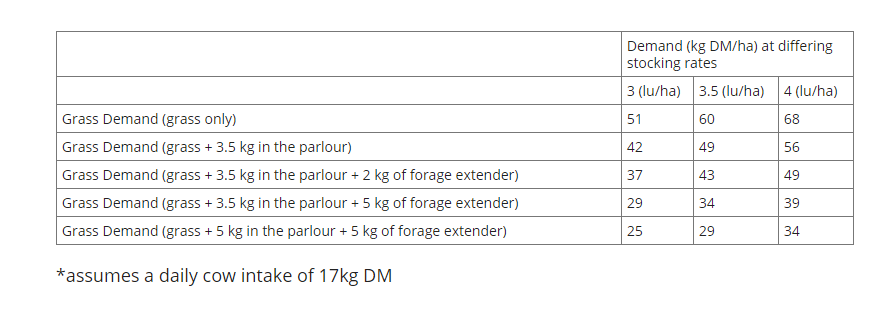As drought conditions drag on – particularly in the southern half of the country – Dairygold has issued a guide for farmers who have not made a second cut of grass silage as of yet.
The advice issued by the southern co-operative is based on four key points.
- How much winter fodder are you short;
- Have you bought standing alternative silage;
- Lowering grass demand below growth rate using fodder extender;
- Assessing farm cover.
Knowing your winter forage deficit
Dairygold has stressed that it should be everyone’s first priority to get a winter forage budget completed as soon as possible.
Preliminary analysis by Dairygold’s technical sales advisor James Bourke has indicated that Dairygold suppliers are on average 25% short on winter forage – though the co-op has stressed that this is only a preliminary estimate.
Dairygold will be holding winter fodder budgeting workshops in August to assist farmers establishing exact deficits.
Purchasing alternative standing silage
Though it might be getting late in places, Dairygold raises the option of using maize and wholecrop silage to make up some or all of the missed second cut.
The co-operative notes that 1ac of maize is equivalent to about 4ac of second cut, while 1ac of wholecrop silage is equivalent to 2.25ac of second cut.
This is going on bulk estimates of: a second cut yield of 6t/ac; a maize silage yield of 20t/ac; and wholecrop silage yield of 10t/ac.
Lowering grass demand below average growth rate by using a forage extender
Grass growth rate: Irish soils at the moment have plenty of heat; many farmers also have fertiliser sitting on the ground. While there has been rain in some parts, plenty more is needed.
Dairygold has given estimates of a potential growth rate of 80kg DM/ha for August and 65kg DM/ha for September this year.
This compares favourably to average growth rates of 65kg DM/ha and 55kg DM/ha for August and September respectively over the past four years.
Meanwhile, grass demand is made up of: cows’ daily demand for grass; and the need to grow grass to increase overall farm cover.
Every 1kg of concentrates given to cows will drop grass demand by 0.86kg DM daily.
Your cows’ daily grass intake times your stocking rate makes up your daily demand for grass. If growth rates are greater than demand then you’ve the potential to conserve this excess grass as silage.
The Co. Cork-based firm cautions, however, that one cannot feed extra concentrates as indicated above and conserve all the extra grass as silage.
Farmers need to manage grass to year-end to ensure they: keep grass in cows’ diets to mid-November; close up at the correct overall farm cover; and have grass available to cows in the spring.
Assessing farm cover
In average years, farmers would usually have a farm cover of about 500kg DM/ha at the start of August, with the aim being to drive average farm cover up to about 1,100kg DM/ha by the end of September.
This would mean having to grow a surplus of about 600kg DM/ha above requirements during the two months.
Balancing the books is vital for this.
When assessing how much extra grass feeding additional concentrates can generate, farmers have to: feed the cow; build a wedge of grass; and close the farm in the correct cover to ensure grass availability next spring.

